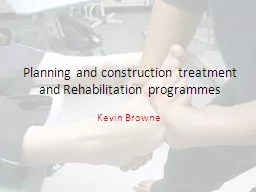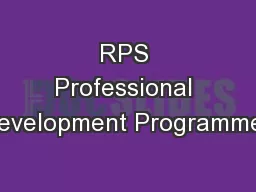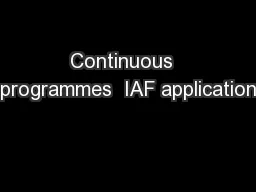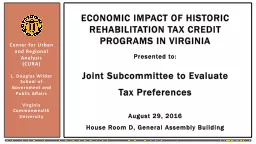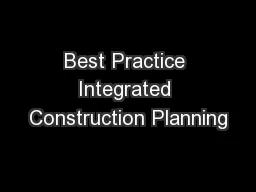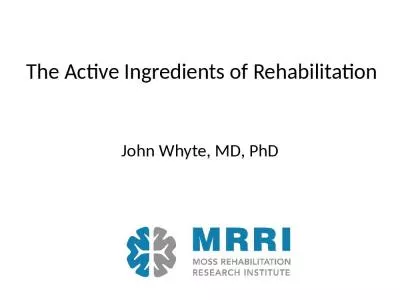PPT-Planning and construction treatment and Rehabilitation programmes
Author : celsa-spraggs | Published Date : 2018-11-21
Kevin Browne Criteria P6 M3 D2 P6Design a safe and appropriate treatment and rehabilitation programme for two common sports injuries with tutor support M3
Presentation Embed Code
Download Presentation
Download Presentation The PPT/PDF document "Planning and construction treatment and ..." is the property of its rightful owner. Permission is granted to download and print the materials on this website for personal, non-commercial use only, and to display it on your personal computer provided you do not modify the materials and that you retain all copyright notices contained in the materials. By downloading content from our website, you accept the terms of this agreement.
Planning and construction treatment and Rehabilitation programmes: Transcript
Download Rules Of Document
"Planning and construction treatment and Rehabilitation programmes"The content belongs to its owner. You may download and print it for personal use, without modification, and keep all copyright notices. By downloading, you agree to these terms.
Related Documents

